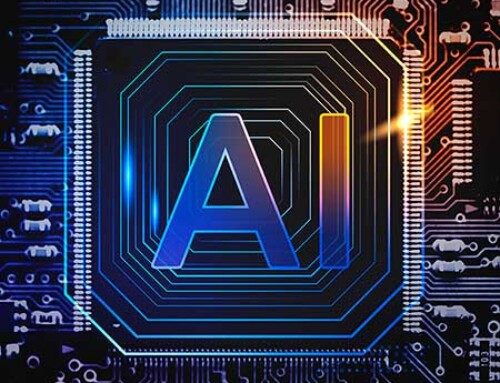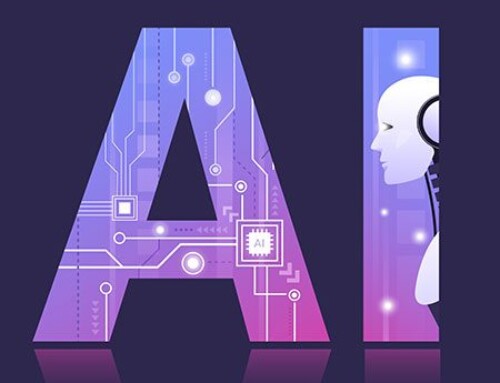14/01/2024
In the dynamic landscape of artificial intelligence (AI) adoption within businesses, even meticulously planned initiatives may face challenges that stem from hidden data costs and suboptimal infrastructure decisions. As organizations increasingly embark on AI transformations to enhance their operations, it's crucial to recognize and address key areas where projects can encounter setbacks. While proactive planning can mitigate several issues, certain hidden obstacles only become apparent in the later stages of implementation.
1. LACK OF AI TECHNOLOGY UNDERSTANDING
Efficient AI project execution goes beyond a solid plan and organizational buy-in. A common misconception is assuming that opting for a cloud-based infrastructure is the optimal choice for cost and speed. While suitable for experiments and prototypes, challenges arise when scaling AI training for production-ready models or dealing with exponentially growing datasets.
The concept of "data gravity" poses a significant risk, potentially leading to unmanageable costs. To counter this, teams should ensure that the compute resources used for training are located in proximity to the data source. This might involve on-premises solutions, cloud-only approaches, or hybrid models based on evolving project needs.
In the realm of AI implementation, a dearth of comprehension regarding AI technologies and capabilities can wreak havoc on organizations. This knowledge gap results in misguided assumptions, ineffective resource allocation, communication breakdowns, unnecessary complexity, and missed optimization opportunities. Employees lacking AI knowledge may struggle to align their work with management objectives, leading to diminished team morale and trust. Addressing this issue requires prioritized research, education, and comprehensive training programs on AI. Establishing an internal knowledge base fosters shared insights, promoting better utilization of AI assets in pursuit of organizational goals.
2. RECOGNIZING AI AS A UNIQUE HIGH-PERFORMANCE CASE
Treating AI development as a conventional software project is a prevalent mistake. Unlike routine software endeavors, AI's reliance on expansive and iterative datasets, coupled with computationally intensive algorithms, demands a specialized approach. Comparing it to someone accustomed to driving a minivan attempting to navigate a high-performance computing Ferrari illustrates the nuanced differences.
AI, while fundamentally software, requires a distinct set of skills and understanding at each layer. Acknowledging these differences is crucial for successful AI integration, necessitating a tailored agenda and expertise in high-performance computing.
Furthermore, failure to align AI strategy with overarching company goals can have detrimental effects, including ineffective resource allocation, unproductive collaboration, conflicting objectives, slow progress, and a weakened competitive edge. To maximize AI adoption benefits, meticulous planning and alignment with long-term objectives are essential. Defining specific AI application objectives, ensuring alignment with broader corporate ambitions, and promoting regular communication and coordination across departments are critical for maintaining alignment.
3. POOR DATA QUALITY FOR AI TRAINING
Another AI implementation best practice you should follow is properly training your AI. Comprehensive AI training includes three distinct stages: initial training, training validation, and testing. The first stage begins by inputting a large set of prepared data into the model to start the "learning process." During this stage, you can check for any early errors that might occur. Moving on to the second stage, you are ready to evaluate the performance of the AI system using a new set of validation data. Any mistakes or oversights in the initial training stage will be made visible here. Finally, you can test the system with real-world unstructured data. If the algorithm performs well, it's ready to be launched. If not, you must restart training from scratch.
Organizations should prioritize gathering high-quality datasets, securing reliable external data sources, standardizing data formats, and implementing robust data governance policies. Continuous monitoring and evaluation of data quality within the development workflow are crucial for the optimal performance of trained AI models.
4. NEGLECTING SECURITY AND PRIVACY IN AI DEVELOPMENT
Security and privacy concerns (e.g. GDPR) often overlooked in AI deployment can result in data breaches, unauthorized access, disclosure of personally identifiable information, reputation damage, and violation of regulatory frameworks. To mitigate these risks, companies should prioritize integrating robust security measures throughout the AI implementation process. Best practices include comprehensive risk assessments, access control protocols, encryption, secure storage methods, guidelines for responsible data use, and regular updates to security policies.
5. LACK OF HUMAN OVERSIGHT IN DECISION-MAKING
Integrating human oversight and judgment is essential in AI decision-making processes to avoid serious flaws. Humans provide contextual awareness, ethics and morals, adaptability, complexity handling, error detection, and foster trust and accountability. Combining human and artificial intelligence leads to improved decision-making, enhanced ethical considerations, and a more comprehensive approach to complex challenges. Businesses and policymakers should prioritize frameworks that seamlessly integrate both human and AI capabilities.
6. INAPPROPRIATELY HIGH EXPECTATIONS FOR AI PERFORMANCE
Setting inappropriately high expectations for AI system performance can lead to disappointment, frustration, and skepticism. Maintaining realistic expectations involves acknowledging AI’s limitations, valuing its strengths, embracing transparency, and avoiding hyperbole. Open communication about expected benefits and limitations, adjusting plans accordingly, and fostering trust is essential for setting realistic expectations and promoting successful collaboration between humans and machines in AI development.
7. FAILURE TO ADAPT AI SYSTEMS TO CHANGING USER NEEDS
Failure to adapt AI systems to changing user needs can result in diminishing returns, decreased competitiveness, loss of credibility, diminished return on investment, and missed opportunities for innovation. Organizations must prioritize agility, user feedback integration, and iterative improvement to ensure the longevity of AI systems. Continuous reevaluation and updating involve staying updated on evolving requirements, assessing the suitability of deployed solutions, and revising or replacing components as needed for ongoing effectiveness.
8. PREPARE YOUR TEAM
It's important to remember that AI is a tool that needs direction from a team of experts. Therefore, before moving forward with the implementation of an AI system, you must first invest in stakeholder training. Additionally, for your employees to be engaged in the process, you need to be transparent about the AI implementation strategy. Break down the various features of the AI tool you will be using and clarify which issues you want to resolve with each one. Letting your employees know how each department is affected and the way workflows will be improved is also a great way to dispel any skepticism surrounding the introduction of new technology.
CONCLUSION
AI is bringing revolutionary changes in so many facets of our lives. Once you figure out the right way to implement it in your business, you can automate time-consuming tasks, build business models with unprecedented speed, make valuable predictions about the future, revolutionize employee training, etc. Follow the AI implementation best practices we shared in this article, and you will quickly be able to enjoy these benefits and many more.



